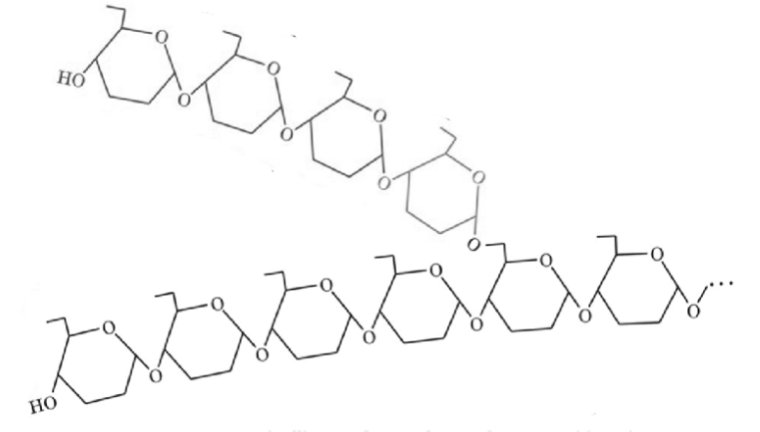Consider the total breakdown of the glycogen structure below. Assuming each glycosidic linkage can be broken down completely and the resulting products are fed through glycolytic metabolism. a) If this molecule was in your muscles, how many molecules of ATP would it generate through fermentation? how many molecules of lactate? b) If the same molecule was in your liver, but was instead fueling glycolysis in your brain, how many molecules of ATP would it generate for the brain through glycolysis? c) The lactate produced in (a) is then transported back to the liver from your muscles. There, it can be used to drive glucose synthesis (known as the Cori cycle). Assume all glucose from this lactate is then re-incorporated into newly synthesized glycogen. List the steps needed for this transformation in the liver and the amount of ATP equivalents it will consume (going from lactate). Also, identify a signaling pathway that would trigger its incorporation into new glycogen, instead of being sent back through the blood as glucose.
Consider the total breakdown of the glycogen structure below. Assuming each glycosidic linkage can be broken down completely and the resulting products are fed through glycolytic
a) If this molecule was in your muscles, how many molecules of ATP would it generate through fermentation? how many molecules of lactate?
b) If the same molecule was in your liver, but was instead fueling glycolysis in your brain, how many molecules of ATP would it generate for the brain through glycolysis?
c) The lactate produced in (a) is then transported back to the liver from your muscles. There, it can be used to drive glucose synthesis (known as the Cori cycle). Assume all glucose from this lactate is then re-incorporated into newly synthesized glycogen. List the steps needed for this transformation in the liver and the amount of ATP equivalents it will consume (going from lactate). Also, identify a signaling pathway that would trigger its incorporation into new glycogen, instead of being sent back through the blood as glucose.

Trending now
This is a popular solution!
Step by step
Solved in 3 steps with 1 images






